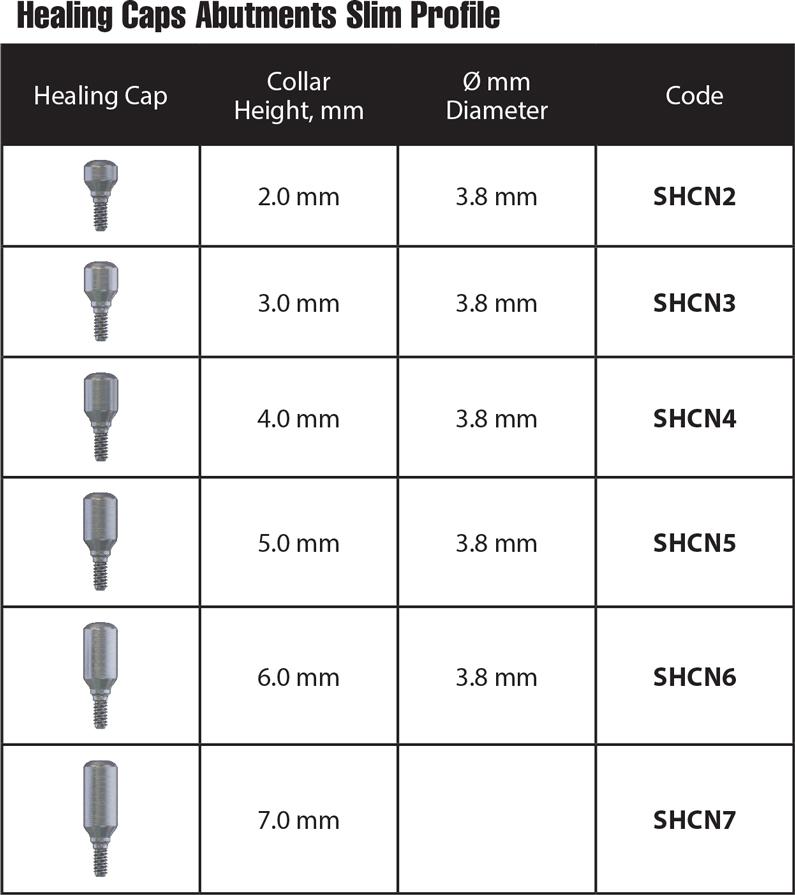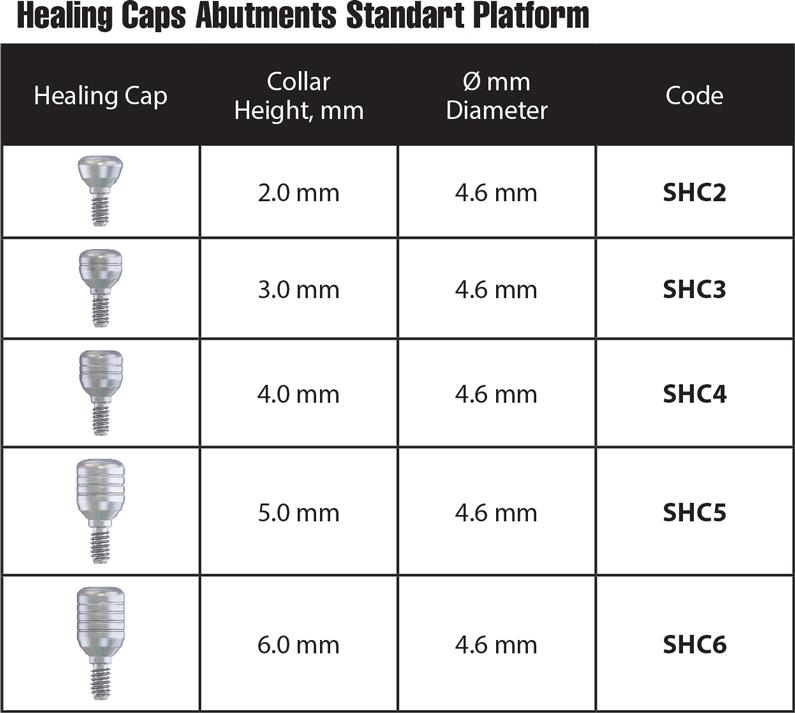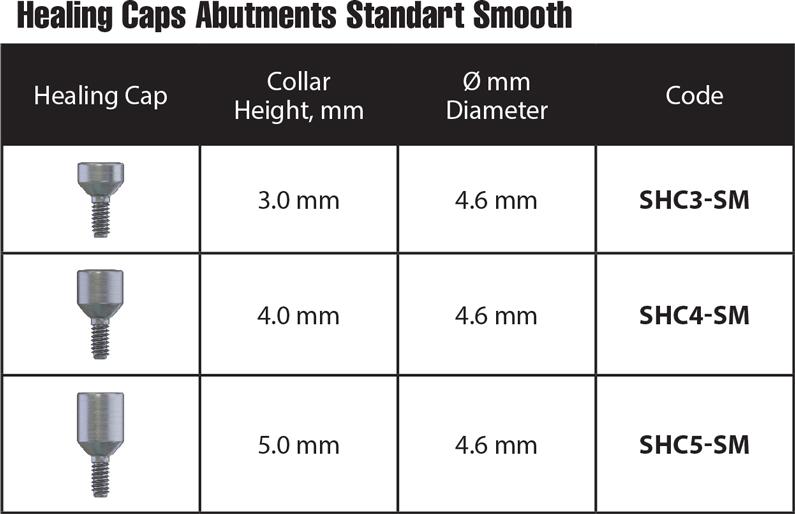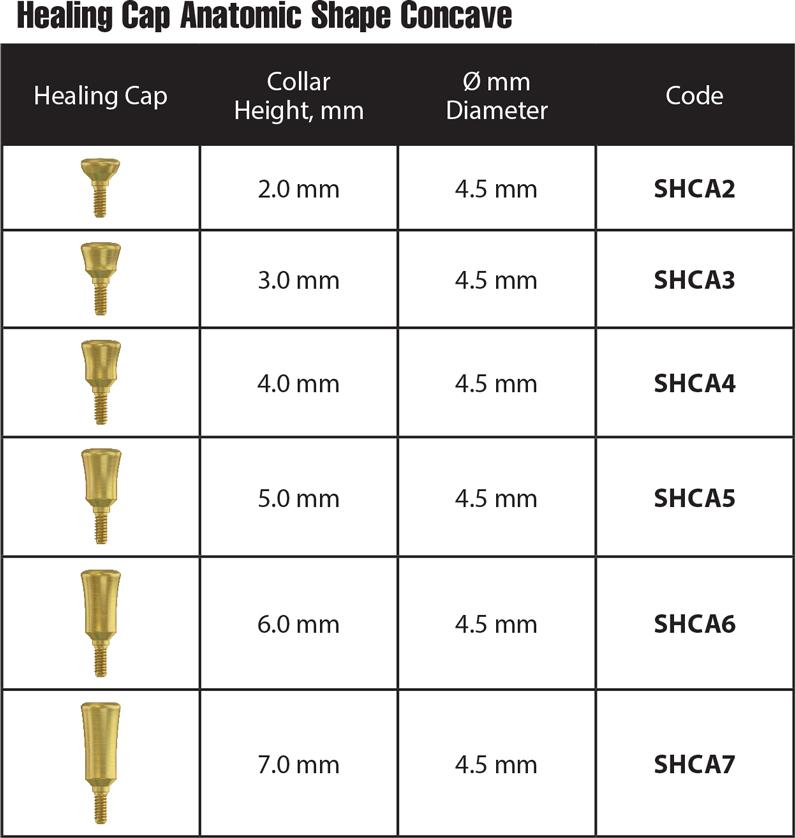Dental healing caps are placed on the exposed top of the implant instead of a cover screw to seal it from the oral cavity. Serving as an effective healing & management prosthetic, healing caps promote an accurate and both high aesthetic closure of the soft tissue surrounding the implant area, leading to a natural-looking gingival formation.
Made from Titanium (Ti6Al4V ELI), DSI presents a wide range of internal hex connections (Zimmer: ⌀ 2.42 & ⌀ 2.0 and NobelActive ⌀ 2.65 compatible), widths, lengths, and forms you can choose from. Dental Healing Cap Placement: Healing cap timing placement is the doctor’s decision, based on the tissue’s / patient’s condition. A healing cap can be applied right after the implant placement, thus preventing a further surgical procedure. Another option for the clinician’s consideration is a “two-stage” procedure were at first, the placed implant is covered by a cover screw and sutured for a healing process. After the appropriate waiting time, the implant is exposed, the cover screw removed and replaced by a healing cap. The tissues are then repositioned around the healing cap, and allow to heal. After the proper healing time, the healing cap is removed, and both the crown base and the implant crown are placed on the dental implant fixture.
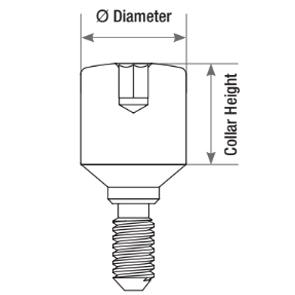
Healing Caps Advantages:
• An accurate closure of the soft tissue grants a more aesthetic appearance of the gingiva.
• Assist in the final contour for crowns.
• Healing caps prevent further surgical procedures.
• Transgingival healing can be achieved when placing taller caps while the implant’s shoulders are in a subgingival position.
• Semi submerged and submerged healing is achieved by healing cap having labial bevel or smaller size respectively allowing a well-defined restoration of the gingiva and also gives a base for further management.
Select the healing cap depending on the mucosa
thickness. Wide healing caps fit best for
molars and premolars soft-tissue contouring.
Recommendation: Hand-tighten using a 1.25
mm hex. driver or a motor mount with a force
of 15 Ncm.

